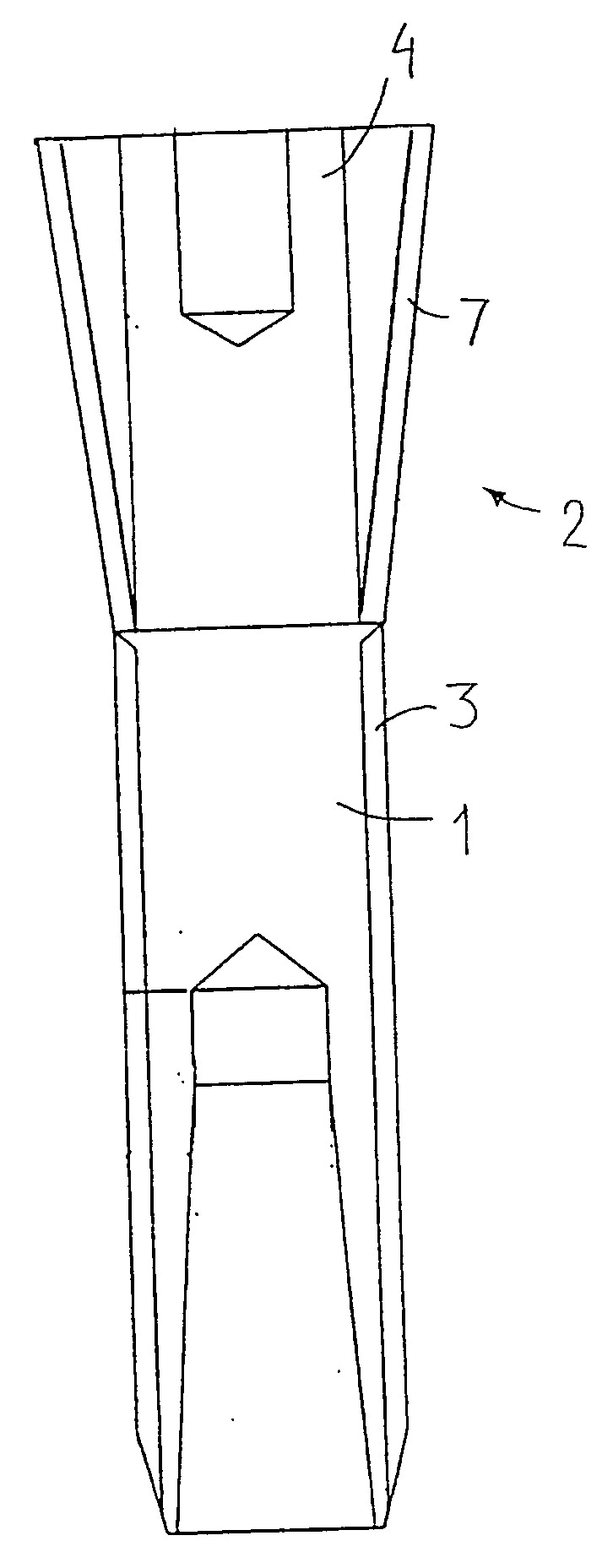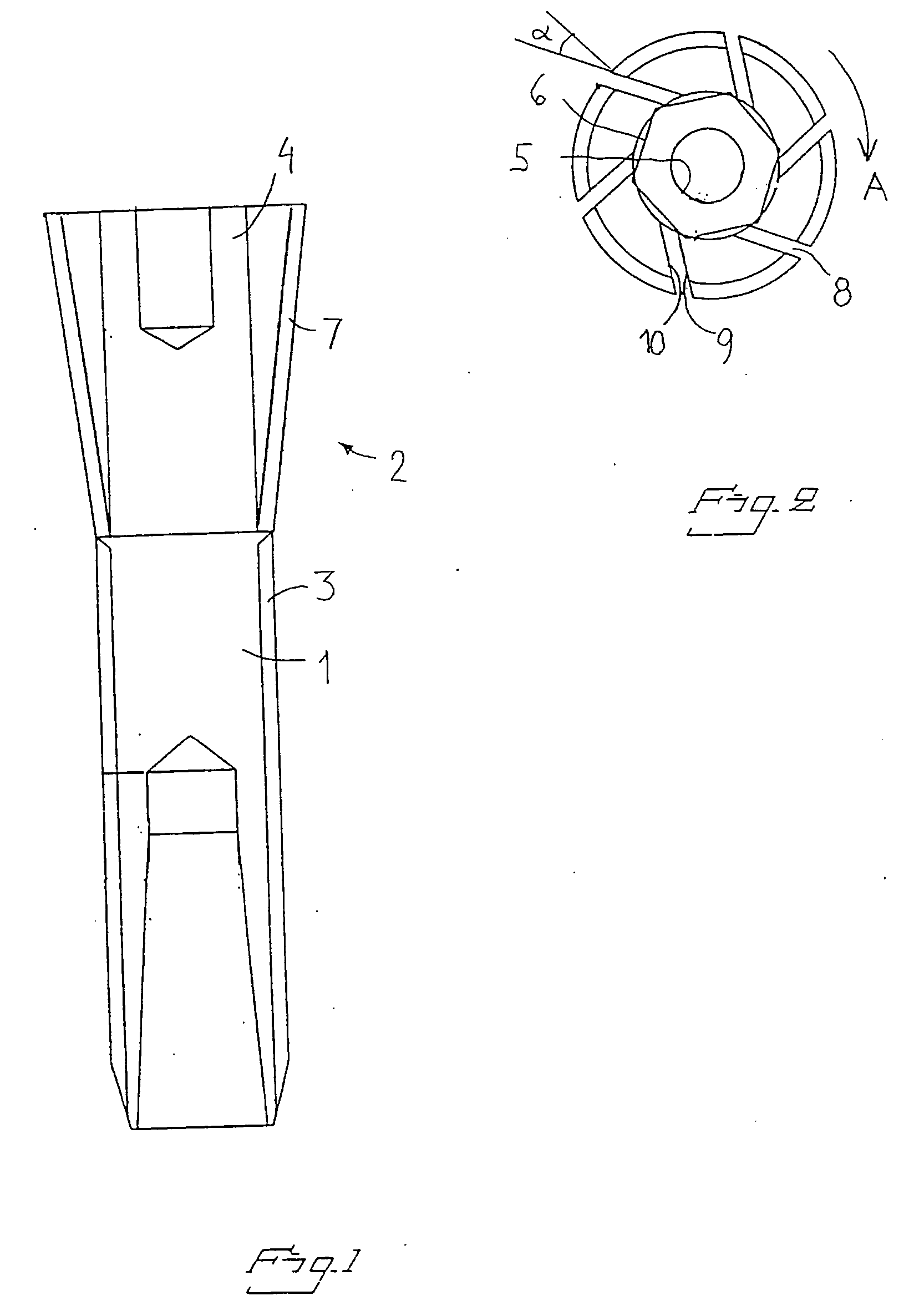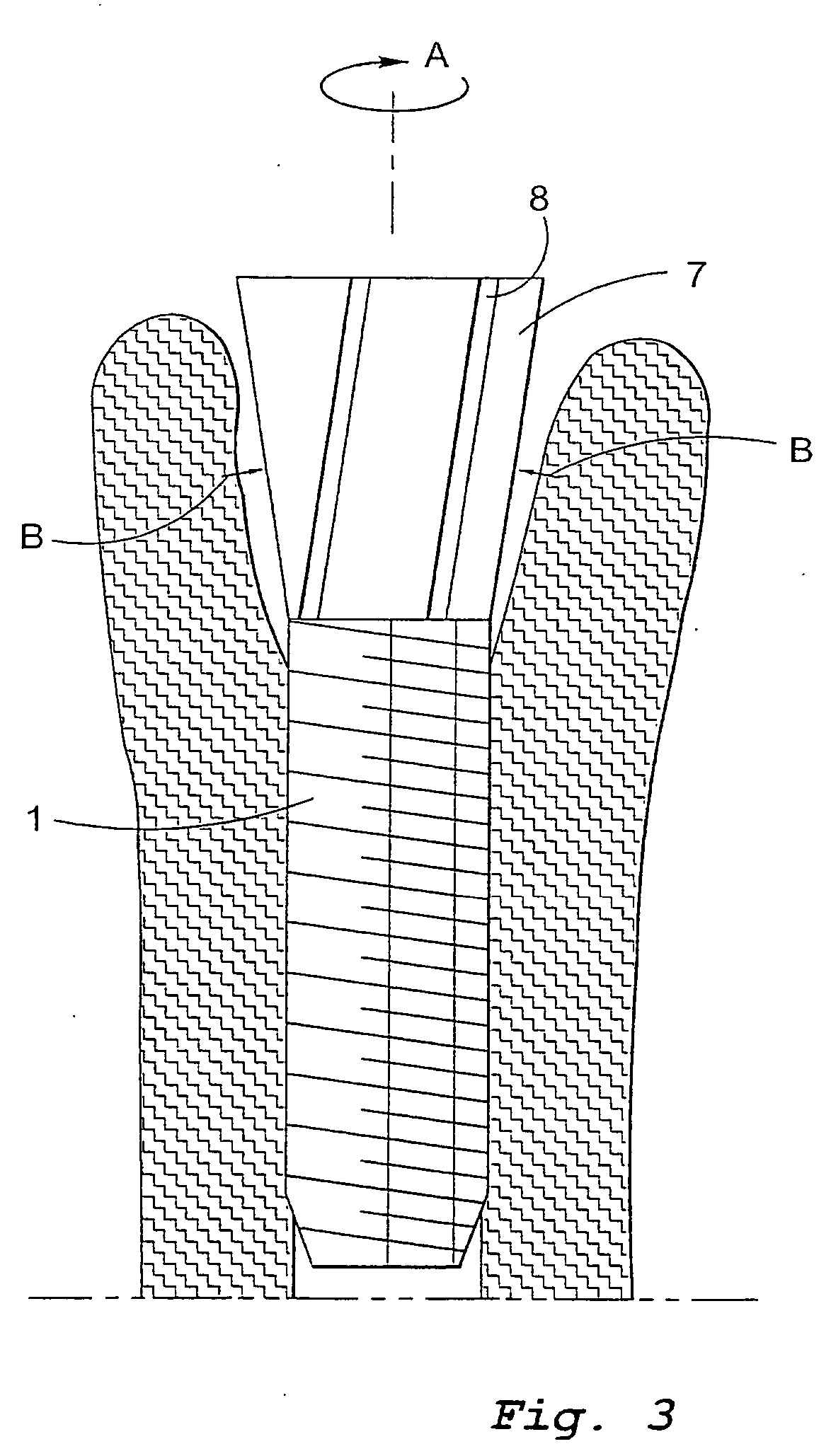Fixture
a technology of fixing and fixing rods, applied in the field of fixing rods, can solve the problems of unsuitable stability and space formation between the fixture and the bone material, and achieve the effects of reducing the resistance of screwing in the fixture, ensuring the stability of the anchorage, and optimum adaptation to the contour of the surrounding tissue material
- Summary
- Abstract
- Description
- Claims
- Application Information
AI Technical Summary
Benefits of technology
Problems solved by technology
Method used
Image
Examples
Embodiment Construction
[0030]FIG. 1 is a longitudinal sectional view of an inventive fixture. The illustrated fixture is intended for a finger joint and is dimensioned to this end. The fixture comprises an anchoring portion 1 and an application portion 2. The anchoring portion has a length of about 20 mm and the application portion a length of about 10 mm.
[0031] The anchoring portion includes an external screw thread 3 which is adapted to enable the fixture to be screwed into a hole predrilled in bone tissue. In the illustrated case, the thread is an M6 thread. The predrilled hole will preferably have a diameter that is slightly smaller than the inner diameter of the thread, i.e. a diameter of about 4.5 mm. The thread 3 extends along the full length of the anchoring portion 2.
[0032] Because the present invention is directed particularly to the design of the application portion 2, a detailed description of the design of the anchoring portion is believed to be unnecessary.
[0033] The application portion i...
PUM
 Login to View More
Login to View More Abstract
Description
Claims
Application Information
 Login to View More
Login to View More - R&D
- Intellectual Property
- Life Sciences
- Materials
- Tech Scout
- Unparalleled Data Quality
- Higher Quality Content
- 60% Fewer Hallucinations
Browse by: Latest US Patents, China's latest patents, Technical Efficacy Thesaurus, Application Domain, Technology Topic, Popular Technical Reports.
© 2025 PatSnap. All rights reserved.Legal|Privacy policy|Modern Slavery Act Transparency Statement|Sitemap|About US| Contact US: help@patsnap.com



